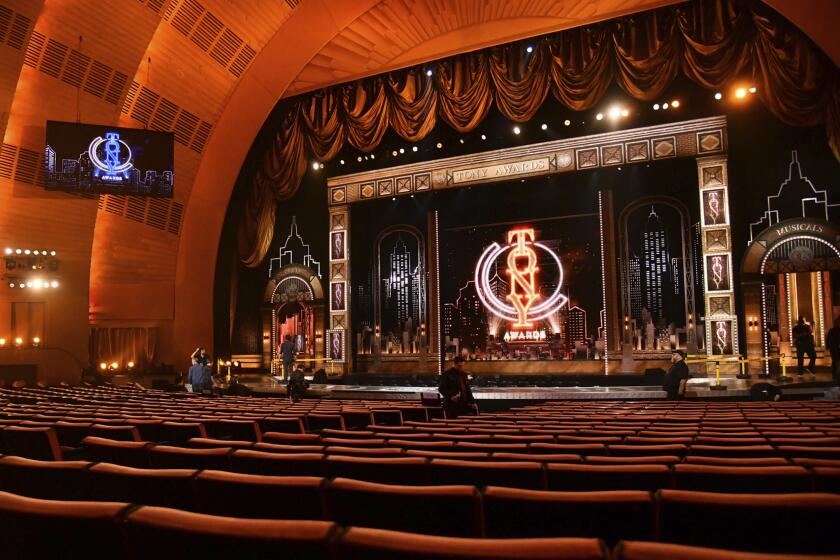MUSIC REVIEW : Violinist Chung Puts a Fresh Face on All-Beethoven Program : Recital: Kyung-Wha Chung closes the La Jolla Chamber Music Society’s Civic Theatre Celebrity Series with a compelling musical excursion.
- Share via
SAN DIEGO — When the music season begins to wind down, programmers favor traditional offerings that will ensure audience loyalty to the bitter end. Thus, violinist Kyung-Wha Chung closed the La Jolla Chamber Music Society’s Civic Theatre Celebrity Series on Wednesday night with an all-Beethoven recital that was guaranteed not to ruffle the feathers of the society’s patrons.
Despite an unadventurous itinerary, the 44-year-old Korean musician made the journey eminently worthwhile. Ably and sensitively assisted by pianist Stephen Kovacevich, Chung balanced keen intellectual insight with a fiery intensity that made Beethoven sound fresh and vital.
She surrounded the tempestuous C Minor Sonata, Op. 30, No. 2, with the sunny A Major, Op. 30, No. 1, and the composer’s final violin sonata, the G Major, Op. 96. Not surprisingly, Chung is slated to record all 10 Beethoven violin sonatas in June.
Although she does not possess the steely authority of Anne-Sophie Mutter or the melting sonority of Gil Shaham, Chung displayed a brightly focused luster in her strong middle range that is her own signature. Only her lowest range lacked clear definition.
Chung let out all the stops in the C Minor Sonata, giving an intense, probing account of its powerful outer movements. She mated incisive phrasing with compelling logic, yet allowed a certain playful accentuation of the scherzo.
Only the lyrical Adagio Cantabile failed to reach its full potential, a victim of overly precise calculation that excluded any sense of spontaneity.
In the program-opening A Major Sonata, Chung was nearly overshadowed by Kovacevich’s sensuously articulate playing. But Chung hit her full stride by the final movement, pacing the cheerful variation cycle with a compelling drive that gave the movement the feeling of inevitable resolution.
If Chung and Kovacevich revealed no additional virtues in the G Major Sonata, they may be forgiven. They outlined its breezy arpeggios with aristocratic nonchalance, and this sonata’s slow movement unfolded like an elegant pas de deux between violin and piano. This time the profuse ornamentation flowed with improvisatory abandon.
More to Read
The biggest entertainment stories
Get our big stories about Hollywood, film, television, music, arts, culture and more right in your inbox as soon as they publish.
You may occasionally receive promotional content from the Los Angeles Times.










